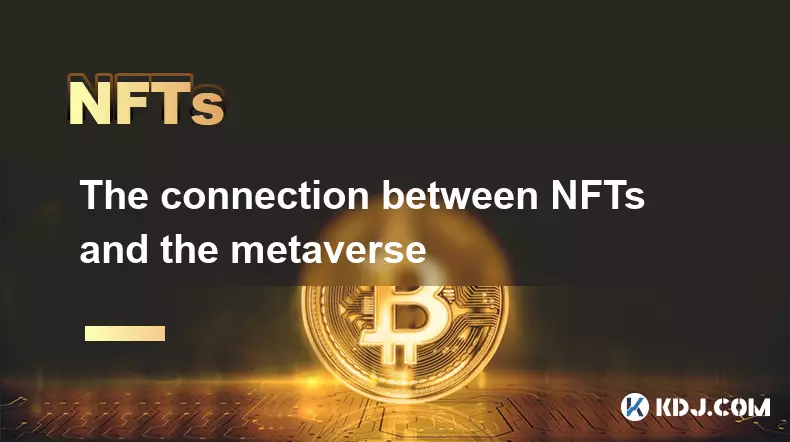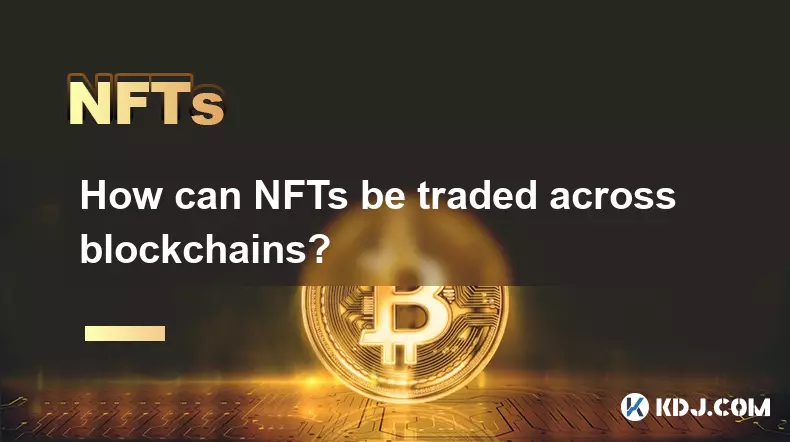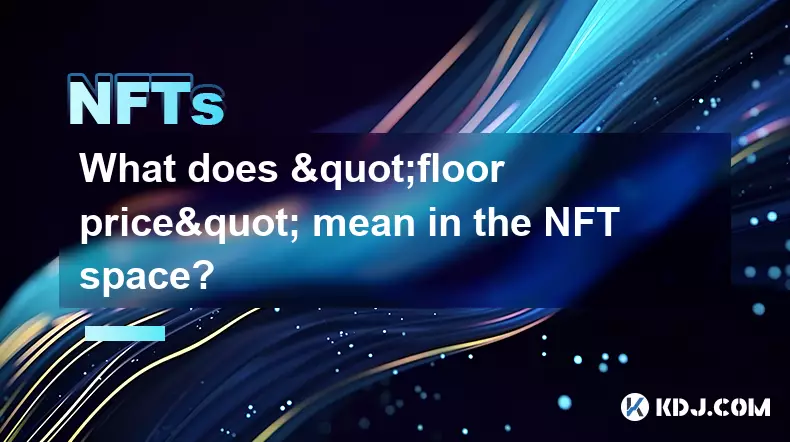-
 bitcoin
bitcoin $109523.663807 USD
-0.13% -
 ethereum
ethereum $4019.526508 USD
2.06% -
 tether
tether $1.000482 USD
0.00% -
 xrp
xrp $2.776815 USD
0.18% -
 bnb
bnb $958.942396 USD
0.12% -
 solana
solana $204.294698 USD
3.84% -
 usd-coin
usd-coin $0.999693 USD
0.00% -
 dogecoin
dogecoin $0.232115 USD
2.09% -
 tron
tron $0.338028 USD
0.84% -
 cardano
cardano $0.790920 USD
1.50% -
 hyperliquid
hyperliquid $44.871443 USD
5.60% -
 ethena-usde
ethena-usde $1.000322 USD
0.04% -
 chainlink
chainlink $21.034165 USD
2.60% -
 avalanche
avalanche $28.794831 USD
-0.54% -
 stellar
stellar $0.360466 USD
1.24%
The connection between NFTs and the metaverse
NFTs enable true digital ownership in the metaverse, allowing users to own, transfer, and monetize virtual assets securely across platforms.
Sep 21, 2025 at 11:01 pm

The Role of NFTs in Establishing Digital Ownership
1. NFTs serve as the foundational layer for proving ownership of digital assets within the metaverse. Each token is uniquely identifiable and cannot be replicated, ensuring that users maintain exclusive rights over their virtual possessions.
2. In virtual worlds, owning a piece of land, avatar clothing, or an art installation requires a tamper-proof record. NFTs provide this through blockchain technology, where every transaction is permanently recorded and publicly verifiable.
3. The integration of NFTs enables users to transfer assets across compatible platforms. A digital jacket purchased in one metaverse environment can potentially be worn in another if interoperability standards are followed.
4. Creators benefit from built-in royalty mechanisms. When an NFT-based item is resold, the original artist receives a percentage automatically, fostering sustainable creative economies inside the metaverse.
5. This decentralized ownership model disrupts traditional gatekeeping by centralized platforms, empowering individuals to truly own their digital identities and belongings.
Metaverse Economies Powered by NFT Transactions
1. Virtual real estate has emerged as one of the most valuable NFT categories. Plots of land in platforms like Decentraland or The Sandbox are bought, developed, and leased using cryptocurrency-backed NFTs.
2. In-game items such as weapons, skins, or vehicles are increasingly being tokenized. Players can earn these through gameplay or purchase them, then sell or trade them freely on open markets.
3. Events and experiences in the metaverse—concerts, exhibitions, conferences—are monetized via NFT tickets. These not only grant access but may also unlock exclusive content or serve as collectibles.
4. Brands are launching virtual product lines tied to NFTs. Gucci, Nike, and others have released digital-only wearables that users equip on avatars, reinforcing status and identity in social spaces.
5. These economic activities form self-sustaining ecosystems where value flows directly between creators, users, and investors without intermediaries taking excessive cuts.
NFTs as Identity and Access Tokens in Virtual Worlds
1. Beyond objects, NFTs function as identity markers. Profile pictures from collections like Bored Ape Yacht Club act as social credentials, granting entry to private communities and events.
2. Some metaverse platforms use NFTs to manage membership tiers. Holding a specific token could unlock governance rights, voting power, or special privileges within a decentralized autonomous organization (DAO).
3. Access to exclusive zones or services is often gated by NFT ownership. Users must possess a particular token to enter VIP lounges, participate in rare quests, or interact with celebrity-hosted environments.
4. Dynamic NFTs evolve based on user behavior. An avatar’s appearance might change after completing challenges, with updates reflected on-chain and visible across connected platforms.
5. By embedding functionality into tokens, the metaverse shifts from static representations to living systems where participation shapes digital presence.
Frequently Asked Questions
How do NFTs ensure authenticity in the metaverse?Each NFT contains metadata stored on the blockchain, including creation date, author, and ownership history. This immutable ledger prevents forgery and allows anyone to verify the legitimacy of a digital asset instantly.
Can the same NFT be used in multiple metaverse platforms?Interoperability depends on technical standards and platform cooperation. While many NFTs follow common protocols like ERC-721 or ERC-1155, cross-platform usage requires shared infrastructure and mutual recognition of asset formats.
What happens if I lose access to my NFT wallet?Losing private keys means permanent loss of access to all associated NFTs. Unlike traditional accounts, there is no central authority to recover credentials. Secure storage solutions like hardware wallets are strongly recommended.
Are all metaverse assets required to be NFTs?No. Many elements within virtual worlds remain non-tokenized, especially temporary effects or system-generated content. However, any asset intended for ownership, trade, or long-term persistence typically relies on NFT technology.
Disclaimer:info@kdj.com
The information provided is not trading advice. kdj.com does not assume any responsibility for any investments made based on the information provided in this article. Cryptocurrencies are highly volatile and it is highly recommended that you invest with caution after thorough research!
If you believe that the content used on this website infringes your copyright, please contact us immediately (info@kdj.com) and we will delete it promptly.
- Rare 1p Coin Could Fetch £200,000: Are You Holding a Fortune?
- 2025-09-27 12:25:13
- MAGACOIN Finance: Buzz, Risks, and the Altcoin Stampede
- 2025-09-27 12:25:13
- Crypto Wallets & Utility Tokens: What's the Hype?
- 2025-09-27 12:30:02
- Shiba Inu's Burn Rate & Crypto Payroll: A New York Perspective
- 2025-09-27 12:45:11
- Grayscale, Near Protocol, and On-Chain Innovation: A New Era for Crypto?
- 2025-09-27 12:45:11
- Punjab Govt, Centre, and the Financial Package: A Tug-of-War?
- 2025-09-27 12:30:02
Related knowledge

How can I determine the authenticity of an NFT project?
Sep 23,2025 at 05:18pm
Understanding the Project Team and Their Background1. Research the identities of the team members behind the NFT project. Verified social media profil...

What's the difference between NFTs and traditional collectibles?
Sep 19,2025 at 12:55pm
Digital Ownership and Provenance1. NFTs are built on blockchain technology, which ensures transparent and immutable records of ownership. Every transa...

How can NFTs be traded across blockchains?
Sep 19,2025 at 12:00pm
Understanding Cross-Chain NFT Trading1. Non-fungible tokens (NFTs) are digital assets that represent ownership of unique items on a blockchain. Origin...

How is NFT rarity calculated?
Sep 18,2025 at 07:54pm
Understanding NFT Rarity Metrics1. NFT rarity is determined by analyzing the uniqueness of individual traits within a collection. Each NFT typically c...

What does "floor price" mean in the NFT space?
Sep 22,2025 at 06:36am
Floor Price: A Core Metric in the NFT Marketplace1. The term floor price refers to the lowest current asking price for any item within a specific NFT ...

How do NFTs help content creators?
Sep 18,2025 at 08:00am
NFTs Empower Creators with Ownership and Monetization1. NFTs provide content creators with verifiable ownership of their digital works, ensuring authe...

How can I determine the authenticity of an NFT project?
Sep 23,2025 at 05:18pm
Understanding the Project Team and Their Background1. Research the identities of the team members behind the NFT project. Verified social media profil...

What's the difference between NFTs and traditional collectibles?
Sep 19,2025 at 12:55pm
Digital Ownership and Provenance1. NFTs are built on blockchain technology, which ensures transparent and immutable records of ownership. Every transa...

How can NFTs be traded across blockchains?
Sep 19,2025 at 12:00pm
Understanding Cross-Chain NFT Trading1. Non-fungible tokens (NFTs) are digital assets that represent ownership of unique items on a blockchain. Origin...

How is NFT rarity calculated?
Sep 18,2025 at 07:54pm
Understanding NFT Rarity Metrics1. NFT rarity is determined by analyzing the uniqueness of individual traits within a collection. Each NFT typically c...

What does "floor price" mean in the NFT space?
Sep 22,2025 at 06:36am
Floor Price: A Core Metric in the NFT Marketplace1. The term floor price refers to the lowest current asking price for any item within a specific NFT ...

How do NFTs help content creators?
Sep 18,2025 at 08:00am
NFTs Empower Creators with Ownership and Monetization1. NFTs provide content creators with verifiable ownership of their digital works, ensuring authe...
See all articles










































































